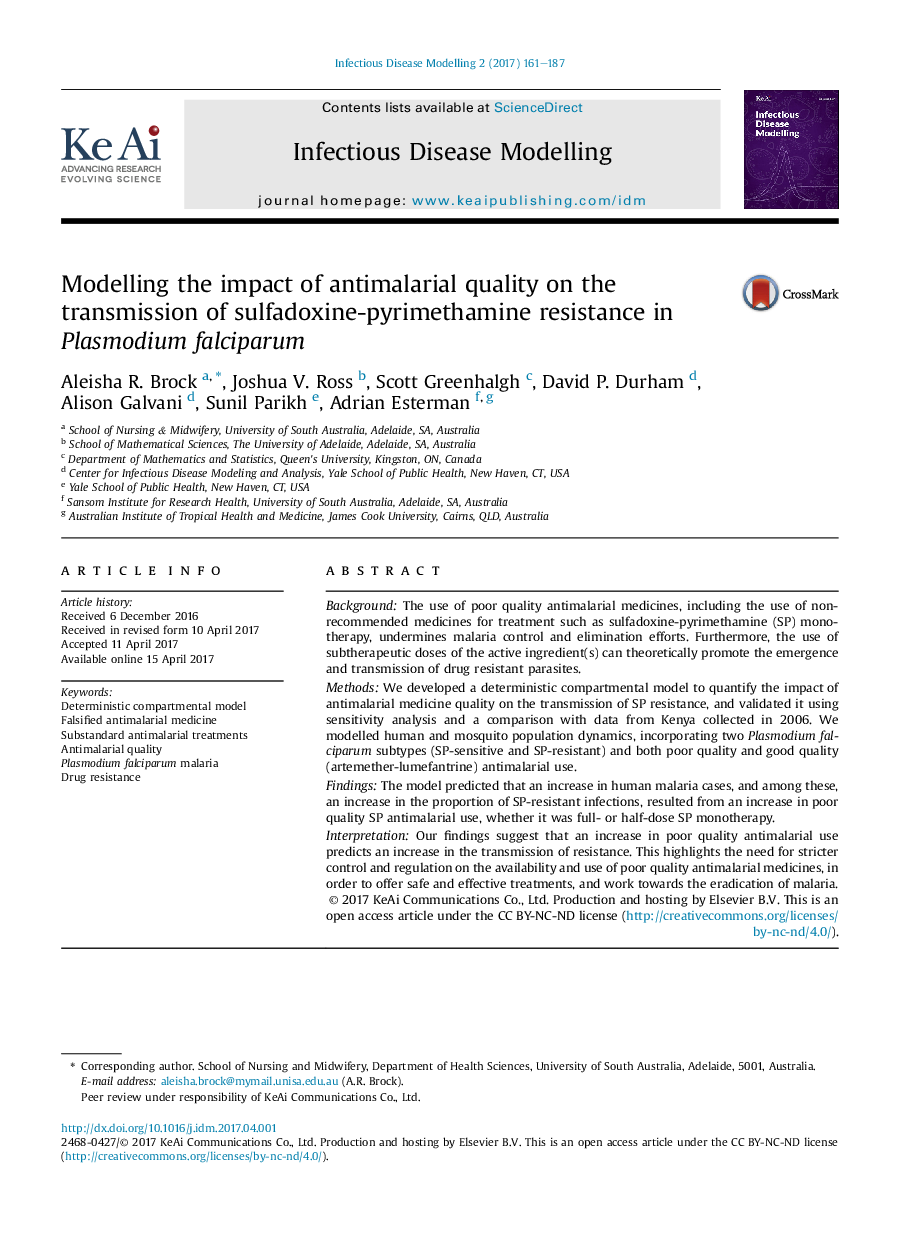| Article ID | Journal | Published Year | Pages | File Type |
|---|---|---|---|---|
| 5662876 | Infectious Disease Modelling | 2017 | 27 Pages |
BackgroundThe use of poor quality antimalarial medicines, including the use of non-recommended medicines for treatment such as sulfadoxine-pyrimethamine (SP) monotherapy, undermines malaria control and elimination efforts. Furthermore, the use of subtherapeutic doses of the active ingredient(s) can theoretically promote the emergence and transmission of drug resistant parasites.MethodsWe developed a deterministic compartmental model to quantify the impact of antimalarial medicine quality on the transmission of SP resistance, and validated it using sensitivity analysis and a comparison with data from Kenya collected in 2006. We modelled human and mosquito population dynamics, incorporating two Plasmodium falciparum subtypes (SP-sensitive and SP-resistant) and both poor quality and good quality (artemether-lumefantrine) antimalarial use.FindingsThe model predicted that an increase in human malaria cases, and among these, an increase in the proportion of SP-resistant infections, resulted from an increase in poor quality SP antimalarial use, whether it was full- or half-dose SP monotherapy.InterpretationOur findings suggest that an increase in poor quality antimalarial use predicts an increase in the transmission of resistance. This highlights the need for stricter control and regulation on the availability and use of poor quality antimalarial medicines, in order to offer safe and effective treatments, and work towards the eradication of malaria.
